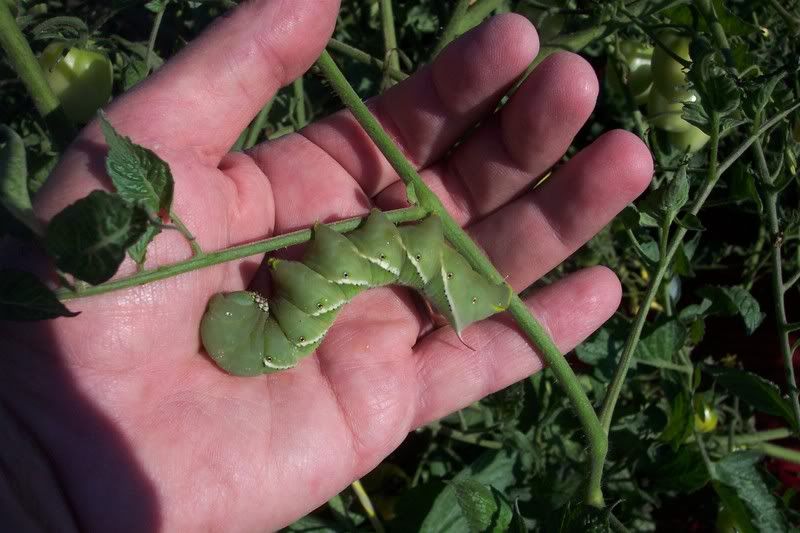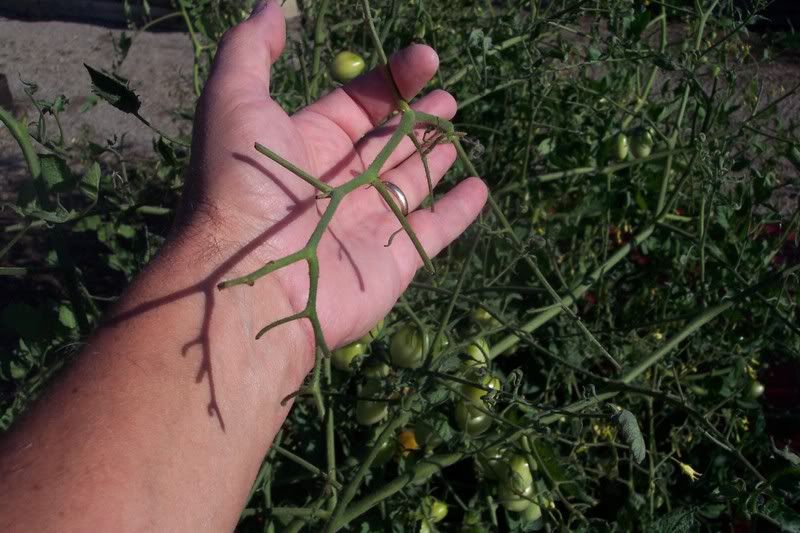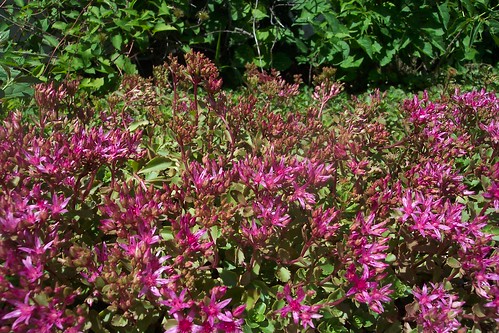This is the time of year for these guys, the Tomato Horn Worm:

Anyone who raises tomatoes will eventually have to deal with these pests.
I know some of you are chuckling to yourselves because you have already guessed the low tech solution to the tomato Horn Worm problem. We have, I don’t know… maybe 80 to100 tomato plants in our garden beds. We just use the old hunt, pick,and stomp method of worm control.
The caterpillars are sometimes hard to see because they are the same color of the tomato plant. So just check your plants for bare stems with no leaves.
 When you see this, the Horn Worms are close by. Usually, they feed toward the top of the plant, but not always.
When you see this, the Horn Worms are close by. Usually, they feed toward the top of the plant, but not always.
When you find them,just pick them off and stomp on them. They make a satisfying sound when stepped on that is just too difficult to describe in words.
If you are too squeamish to step on them, you can use a very high tech method employing specially bred bacteria to infect them with their own brand of the Black Plague.
The bacteria (Bacillus thurengensis or BT for short) is quite harmless to people and pets. Heck, it won’t even kill other bugs, but it is deadly to caterpillars of all kinds.
The mid-tech control is to just spray an insecticide to kill them. I never use that method, seems to me to be over-kill (yes, pun intended).
Sometimes, mother nature steps in and sends in her own worm killers, if you see a Horn Worm with small egg-shaped objects on its back, don’t kill it. These egg-shaped things are the pupal cocoons of the Braconid Wasp, a parasite of Horn Worms.
From each one of those cocoons another wasp will emerge. So, instead of one worm hunter, you now have dozens doing your dirty work. Ain’t nature grand?

photo: Clemson University
So if the Horn Worm is a caterpillar, it must turn into a moth or butterfly right? Yep, it turns into a type of “humming bird” moth (also known as a Sphinx moth). The Horn Worm moths only fly at night. There are other species of “humming bird” moths that fly during the day.

photo: W.S. Cranshaw
That’s the “skinny” on a fat worm. Good Hunting!
Bob






